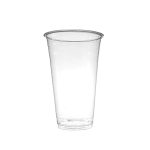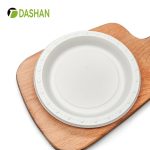Introduction
When it comes to ordering or preparing drinks, understanding the volume measurements can be confusing, especially with different units like ounces (oz), milliliters (ml), and cups used around the world. Whether you’re a consumer wanting the perfect coffee size, a barista aiming for recipe consistency, or a business owner managing beverage portions, knowing how to accurately convert between oz and ml is essential. This guide breaks down everything you need to know about converting drink cup sizes, offers expert insights, practical examples, and answers common questions—all to make your drink experience simple and precise.

Why Understanding Oz to Ml Conversion Matters
If you’ve ever traveled internationally or ordered drinks online, you may have noticed cup sizes labeled in ounces (oz) or milliliters (ml). Common sizes like 8 fluid ounces and 10 oz cups are frequently used in menus and packaging. Understanding how to convert between these units—and how to convert milliliters to cups—is essential for getting the exact drink size you want, whether it’s a coffee, bubble tea, smoothie, or soda.
Real user feedback:
“I used to guess when ordering bubble tea abroad. After learning the oz to ml conversion, including what 8 fluid ounces means, I finally get the size I expect!” – Jamie L.
What Are Ounces and Cups?
-
Ounce (Fluid Ounce or fl oz) is a unit of volume used primarily in the US and UK. Sizes like 8 fluid ounces (1 cup) and 10 oz cups are common in the beverage industry.
-
US fluid ounce = 29.57 ml
-
UK fluid ounce = 28.41 ml (slightly smaller)
-
Cup in the US measurement system = 8 US fluid ounces = 237 ml.
Note: Understanding these basics helps when converting milliliters to cups or vice versa, to avoid confusion in recipes or drink orders.
Expert tip:
“Always check whether the ounces are US or UK to get accurate conversion, especially for recipes and packaging.” – Sarah T., Beverage Packaging Specialist
Step-by-Step Guide: How to Convert Oz to Ml
Step 1: Identify if your measurement is in US or UK fluid ounces.
Step 2: Use the correct conversion factor:
-
US fl oz × 29.57 = ml
-
UK fl oz × 28.41 = ml
Step 3: Multiply your oz value by the factor.
Step 4: Round the result to a practical number (usually no more than 2 decimal places).
Step 5: Use the ml value to pick the right cup size or measure ingredients accurately.
Step-by-Step Conversion Guide
Accurately converting ounces (oz) to cups is simple when you follow these clear steps. Here’s how to measure common drink sizes precisely:
Converting 8 oz to Cups
-
8 oz equals 1 cup
-
To measure 8 oz (8 fluid ounces): fill one standard measuring cup
Converting 10 oz to Cups
-
10 oz equals 1.25 cups
-
To measure 10 oz cups: fill one full cup and a quarter of another
Converting 12 oz to Cups
-
12 oz equals 1.5 cups
-
To measure 12 oz: fill one full cup and then half a cup more
Converting 14 oz to Cups
-
14 oz equals approximately 1 and 3/4 cups
-
To measure 14 oz: use one cup plus three quarters of another cup
Converting 16 oz to Cups
-
16 oz equals exactly 2 cups
-
To measure 16 oz: fill two standard measuring cups fully
Converting 18 oz to Cups
-
18 oz equals 2 and 1/4 cups
-
To measure 18 oz: fill two cups plus an additional quarter cup
Converting 20 oz to Cups
-
20 oz equals 2 and a half cups
-
To measure 20 oz: use two full cups and a half cup
Converting 24 oz to Cups
-
24 oz equals 3 cups
-
To measure 24 oz: fill three standard cups
Converting 32 oz to Cups
-
32 oz equals 4 cups
-
To measure 32 oz: use four full measuring cups
Quick Oz to Ml Conversion Table for Common Drink Sizes
| Ounces (US fl oz) | Milliliters (ml) | Typical Drink Size Example |
|---|---|---|
| 8 oz | 237 ml | Small coffee (8 fluid ounces) |
| 10 oz | 296 ml | Medium cup size (10 oz cups) |
| 12 oz | 355 ml | Regular soda can |
| 14 oz | 414 ml | Medium iced tea |
| 16 oz | 473 ml | Large coffee or medium bubble tea |
| 18 oz | 532 ml | Medium smoothie |
| 20 oz | 591 ml | Large iced latte |
| 24 oz | 710 ml | Large bubble tea |
| 32 oz | 946 ml | Extra-large soda or iced drink |
💡 Tip: 500 ml is approximately 16.9 oz.
Expert Insights: Industry Trends and Real-World Examples
Food science experts highlight that precise volume conversion is key to product quality and customer satisfaction. As global markets unify standards, companies increasingly focus on accurate oz-to-ml conversions to maintain consistency and reduce waste.
Case Study 1: Specialty Coffee Shop
A specialty coffee shop improved customer experience by training baristas to use exact oz-to-ml conversions, resulting in more consistent drink sizes and better inventory management.
Case Study 2: Ready-to-Drink Beverage Producer
A beverage company standardized container sizes based on accurate oz-to-ml data, minimizing production errors and increasing customer trust in labeling.
Customer Voices
“Knowing exact ml amounts helps us create uniform drinks that keep customers coming back.” — Emily, Café Owner
“Proper volume conversions are essential to avoid waste and maintain flavor profiles.” — David, Beverage Production Manager
Full Conversion Chart (1 oz to 64 oz)
| Oz | Ml | Oz | Ml |
|---|---|---|---|
| 1 | 29.57 | 20 | 591.4 |
| 2 | 59.14 | 24 | 709.7 |
| 4 | 118.3 | 32 | 946.4 |
| 8 | 236.6 | 44 | 1299.1 |
| 12 | 354.9 | 48 | 1419.3 |
| 14 | 413.9 | 54 | 1597.0 |
| 16 | 473.1 | 64 | 1892.5 |
| 18 | 531.3 |
Frequently Asked Questions (FAQ)
-
Is 16 oz the same as 500 ml?
No, 16 oz is about 473 ml. 500 ml is roughly 16.9 oz. -
What is the difference between US and UK fluid ounces?
US fl oz = 29.57 ml, UK fl oz = 28.41 ml. -
How many ml in 1 US cup?
1 cup = 8 US fl oz = 237 ml. -
Why do drink sizes use oz in the US but ml elsewhere?
The US uses the imperial system, other countries mostly use metric. -
How can I quickly estimate ml from oz?
Multiply oz by 30 for a rough estimate. -
Are oz and oz weight the same?
No, fluid ounces measure volume, ounces measure weight. -
What size cups do bubble tea shops usually use?
Typically 16 oz (473 ml) and 24 oz (710 ml). -
Is there a standard size for coffee cups?
Sizes vary, but common US sizes are 8 oz, 12 oz, 16 oz, and 20 oz. -
How does oz-to-ml affect calorie counting?
Knowing exact volume helps accurately calculate calories. -
Can I use this conversion for both hot and cold drinks?
Yes, the conversion applies regardless of temperature. -
How many ml is a 500 ml bottle in oz?
About 16.9 oz. -
Why is it important to know if ounces are US or UK?
Because the small difference can affect recipes, labeling, and packaging. -
What is 8 fluid ounces in milliliters?
8 fluid ounces equals approximately 237 milliliters. -
How many cups are in 10 oz?
10 oz cups equals 1.25 cups. -
How do I convert milliliters to cups?
To convert milliliters to cups, divide the milliliter amount by 237 (1 US cup = 237 ml).
Conclusion
Understanding how to convert ounces to milliliters is essential for drink lovers, baristas, and anyone working with beverages globally. With clear conversion steps, practical charts, and expert insights, you can confidently select the right drink sizes wherever you are. Accurate conversions help avoid confusion, improve portion control, and enhance the overall drinking experience.
References
-
U.S. Food and Drug Administration (FDA). “Guidance for Industry: Food Labeling; Nutrient Content Claims; Definition for ‘High Potency’ and Definition for ‘Antioxidant’.”
-
National Institute of Standards and Technology (NIST). “Units of Measurement: Volume.”
-
The Beverage Industry. “Standardizing Fluid Ounce Conversions in Beverage Production.” Beverage Industry Magazine, 2022.
-
American Culinary Federation. “Best Practices for Accurate Volume Measurement.” 2023.
-
International Organization for Standardization (ISO). “ISO 80000-1: Quantities and Units — Part 1: General.”
-
U.S. Department of Agriculture (USDA). “Food Measurement Conversion Tables.”
-
The National Coffee Association USA. “Coffee Sizes and Standards.”
-
Journal of Food Science. “Standardization of Volume Measurements in Food and Beverage Industry.” Vol. 85, Issue 2, 2020.
-
Beverage Industry Magazine. “Global Trends in Beverage Packaging and Volume Standardization,” 2021.
-
American Society of Brewing Chemists (ASBC). “Measurement Standards for Liquid Volumes in Brewing.”




